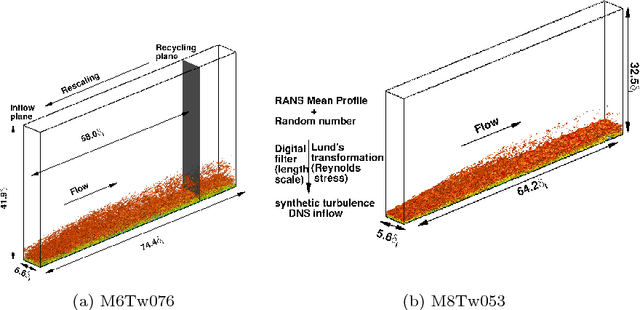Prediction of Reynolds Stresses in High-Mach-Number Turbulent Boundary Layers using Physics-Informed Machine Learning
Paper and Code
Aug 19, 2018



Modeled Reynolds stress is a major source of model-form uncertainties in Reynolds-averaged Navier-Stokes (RANS) simulations. Recently, a physics-informed machine-learning (PIML) approach has been proposed for reconstructing the discrepancies in RANS-modeled Reynolds stresses. The merits of the PIML framework has been demonstrated in several canonical incompressible flows. However, its performance on high-Mach-number flows is still not clear. In this work we use the PIML approach to predict the discrepancies in RANS modeled Reynolds stresses in high-Mach-number flat-plate turbulent boundary layers by using an existing DNS database. Specifically, the discrepancy function is first constructed using a DNS training flow and then used to correct RANS-predicted Reynolds stresses under flow conditions different from the DNS. The machine-learning technique is shown to significantly improve RANS-modeled turbulent normal stresses, the turbulent kinetic energy, and the Reynolds-stress anisotropy. Improvements are consistently observed when different training datasets are used. Moreover, a high-dimensional visualization technique and distance metrics are used to provide a priori assessment of prediction confidence based only on RANS simulations. This study demonstrates that the PIML approach is a computationally affordable technique for improving the accuracy of RANS-modeled Reynolds stresses for high-Mach-number turbulent flows when there is a lack of experiments and high-fidelity simulations.
 Add to Chrome
Add to Chrome Add to Firefox
Add to Firefox Add to Edge
Add to Edge